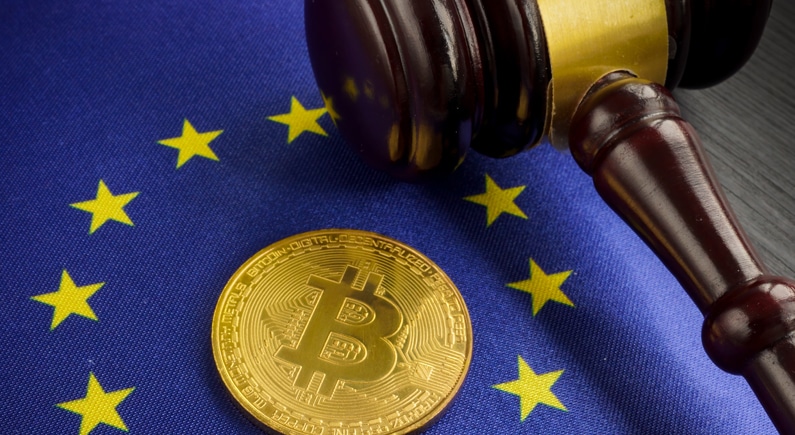Europe’s new crypto MiCA regulations; pros and cons

The final vote on the EU’s highly anticipated crypto rules know as the Markets in Crypto Assets (MiCA) regulation was deferred to April 2023. This is not the first delay. Lawmakers previously rescheduled from November 2022 to February 2023.
The regulatory setback caused a number of technical difficulties – as such MiCA is still on route to becoming the first comprehensive European crypto framework. But that’s set to happen in 2024, whereas the second half of 2022 saw a number of industry shocks which created new challenges for regulators.
There’s little doubt that as the industry dynamic in crypto rapidly evolves, 2023 will also present some hot topics for discussion also. For the purposes of this article, we’ll attempt to assume regulators are trying to work towards workable conciliation, and not deliberately sabotaging finance 2.0 (crypto) because incumbents find financial innovation are inconvenient.
For instance, the current ‘big debate’ in the United States centres around whether Ethereum is a security or not. US regulators appear to have made their mind up, having issued a court complaint against KuCoin, naming Ethereum as an unregistered security. The outcome of this legal battle will certainly set a precedent, and certainly places Ether holders in a position of insecurity.
Back to MiCA – the question is whether the regulatory bill actually qualifies as a ‘comprehensive framework’ a year from now. Will the framework prevent future failures and fraud similar to TerraUSD or FTX, or will it function as a means to create red tap and spring out new scams elsewhere, just like legacy finance?
These questions have certainly been a ruminated upon in the mind of EU Central Bank President Christine Lagarde. In November 2022, during the FTX scandal, she claimed “there will have to be a MiCA II, which embraces broader what it aims to regulate and to supervise, and that is very much needed.”
Of course, it’s no wonder that more regulation is the answer for the regulator in chief. For a hammer, everything looks like nails. Still, it remains to be seen whether the Markets in Crypto Assets regulation will be enough to enable better functioning of the crypto market in Europe.
EU DeFi regulations are a grey area
One possible blind spot in the MiCA bill is decentralised finance (DeFi). The current draft lacks any mention of yield-bearing innovations, and this could be an issue on arrival – at least that’s what some crypto firms say.
General counsel at Quadrata, Jeffrey Blockinger, imagined a future for this looming crisis in the event of more financial disruption: “if DeFi protocols disrupt the major centralized exchanges as a result of a broad loss of confidence in their business model, new rules could be proposed to address everything from money laundering to customer protection.”
Interestingly, recent UN figures on AML and KYC processes have found that in practical terms the “success rate” of money laundering controls is scarcely an accounting rounding error in criminal accounts.
Meanwhile, Bittrex exchange CEO, Oliver Linch believes there may be a regulatory oversight with DeFi regulation that MiCA couldn’t address. He says that DeFi is inherently unregulatable, and even argues that it’s a low priority for regulators given that most customers use crypto via centralised exchanges. Still, Linch said that just because regulators can’t supervise DeFi doesn’t there is no role for it.
You’d be forgiven if this ‘role’ for DeFi is not forthcoming – I’m also unsure what this elusive role might be besides facilitating another spastic systemic risk event further down the line. That said, the lack of a reference to DeFi doesn’t mean it’s impossible to regulate. Managing director at Swan bitcoin, Terrance Yang, said that DeFi is transferable to traditional financial language, thereby offering a possible venue for regulation.
“DeFi is just a bunch of derivatives, bonds, loans and equity financing dressed up as something new and innovative.”
The yield-bearing, lending and borrowing of collateralised crypto products are things that investment and commercial banks are interested in. As such, Yang believes they should be regulated. Perhaps one could characterise DeFi projects as providing crypto asset services using MiCA’s vocabulary.
But if that’s the case, the question then falls on a debate about what constitutes ‘sufficient decentralisation’.
Lending and staking
The EU framework also does not address crypto lending and staking markets. Given the successive failures of lending giants such as Celsius, and the increased attention hailing from US lawmakers, the EU might want to decide how to tackle these areas too.
There are essentially two ways of approaching the regulatory regime:
- Either opt for a hands-off, free market approach, which only looks at fraud after the fact. This is a preferable scenario for free-market absolutists (yours truly), innovators and entrepreneurs.
- Otherwise, the EU could set rules for all entities that offer such products within the European continent. Either choice must be long-term, clear and unambiguous, however.
2022 was a year of absolute carnage and fraud in crypto financial markets. When the next series of carnage inevitably unfolds, the rules of the game should focus on low-hanging fruit. Ernest Lima, partner at XReg Consulting spoke to Cointelegraph reporters about this, saying that “the market collapse in the last year was spurred by poor practices in this space like weak or non-existing risk management and reliance on worthless collateral.”
Currently, the emerging crypto market is a mishmash of asymmetrical regulatory frameworks, which are certainly problematic for incumbents and heavily regulated legacy financial institutions. US lawmakers have even told traditional banks to stay away from crypto as the government orchestrates an organised crackdown on the crypto sector.
The hostile environment certainly does not help regulator’s credibility in the eyes of normal players.
One more area to watch is the nonfungible token space (NFTs) – which now exist on Bitcoin as so-called ‘ordinals’. Despite the lack of a classification under MiCA, European Commission advisor Peter Kerstens stated in August 2022 that NFT regulation will be similar to crypto in general. This implies that NFT issuers will be compared to service providers of digital assets and would be obliged to report operations on a regular basis to the European Securities and Markets Authority.
Cause for optimism?
MiCA was met with moderate optimism from the crypto sector. Despite some rigidities in the text regarding self-hosted wallets which have since been removed, the approach appeared as a reasonable and promising source of legitimacy for the space. The term ‘legitimacy’ is entirely dependent on whose opinion you’re asking.
Regardless, with the tumult of 2022 behind us, a possible iteration of a hypothetical “MiCA-2” could be more restrictive.
At least that’s what Bittrex exchange CEO Oliver Linch expects – tighter and swifter scrutiny! He said: “the further delays MiCA has faced have only highlighted the idle approach taken by the EU to introduce legislation that is needed more now than ever before, particularly given recent market events.”
Lima also anticipates a closer approach with more issues covered. And it is really important for European lawmakers to pace up with the regulatory updates:
“I expect a more robust approach to be taken in some of the technical standards and guidelines that are currently being worked on and will form part of the MiCA regime. We might also see greater scrutiny by regulators in authorization, approval and supervision, but ‘crypto winter’ will have long since thawed by the time the legislation is revised.”
Still, it’s easy to get caught up in Europe’s extensive bureaucratic machine. The European Union is not the United States and will never be at the same federated level, at least not in our lifetimes. MiCA formulates a mood which could temper the sector’s wild swings, all the while bridging legacy finance with finance 2.0. With that in mind, the effect of MiCA is more of a symbolic attempt at regulating the sector. The last major rule from the EU was one which would oblige banks to store 1,250% risk weight on exposure to digital assets.
This catch-all bill does not differentiate between bitcoin and the 22,700-plus projects, and is clearly an attempt to create enough of a financial buffer to avoid catastrophic contagion events. But when it really comes down to it, no amount of buffers can taper a fiat ponzi scheme, can they?









